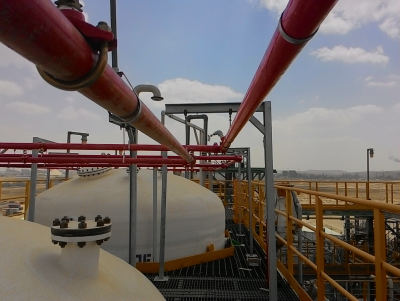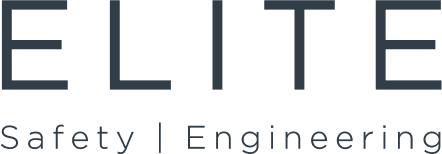About us
ELITE Safety is an experts company for advanced multi-system safety planning and risk management in a dynamic environment.
Our company provides planning, consulting, and safety management services across a wide range of sectors to contracting companies, entrepreneurs, government agencies, hospitals, industries, local authorities, and public companies. Our company excels in delivering advanced solutions for large and complex projects, addressing the construction's challenges and evolving industry, planning forest fire protection programs, and responding to safety challenges in renewable energy projects and climate change.
Our Vision
To facilitate companies, entrepreneurs, factories, and organizations to grow, develop and prosper in their fields, while preserving human life, property and nature, by efficient and innovative planning of advanced safety.

Dedy Simhi
Lieutenant General (Res.)
Chairman
Former Fire and Rescue Commissioner for Israel, Chief of Staff of the Home Front Command, and an IDF attaché in China. International expert in risk management, crisis, and emergency situations. Extensive experience in regulatory processes and regulation.

Moshe Shahar
Lieutenant Colonel (Res.)
CEO
B.A. in Public Policy. Senior advisor to the Fire Commissioner, variety of management and command positions in field units. Extensive knowledge in the study of institutions and organizations, practical experience in regulatory processes and policy, regulation and licensing.

Eng. Yonatan Dolstra
Eng.
Chief Engineer
Engineer in the Home Front Command (Res.). Practical experience in managing residential and commercial projects, fire safety officer, certified planner for fire safety plans, risk surveys and field files.

Yehezkel (Hezi) Levi
General (Res.)
Expert in industrial and open area firefighting.
Commander of the Hof (Coast) District in Israel Fire and Rescue Services. M.A. in Disaster Area Geography. Has extensive practical experience in preventing and extinguishing complex fires, managing hazardous materials incidents, and enforcing regulations. Over 30 years of command experience as a professional fire officer.

Ran Shelf
Colonel (Res.)
Expert in fire science and fire investigations
Head of Fire Investigation Department in Israel Fire and Rescue Services. M.Sc. in Applied Chemistry. Director of the Research and Development Department in Israel Fire and Rescue Services and Head of the Arson Investigations Department of the Israel Police. Chairman of the Association of Fire Investigators in Israel, a certified expert witness, innovator and developer of solutions for new firefighting challenges.

Adr. Shauli Sernof
Forest fire risk management specialist
Bachelor's and Master's degrees in Landscape Architecture in the United States with specialization in Fire Management. Management of complex projects at JNK, Nature and Parks Authority and local authorities, landscape planning and fire risk reduction for national sites.

Yigal Feberman
Lieutenant Colonel (Res.)
Protection and shelter Engineer
B.Sc. in Civil Engineering. Former Chief Protection Engineer in the Home Front Command, Head of Regulation and Dan District Engineer, responsible for the regulatory system and a district engineer in the Dan district. An expert in protection and shelter, led the Southern Protection Project.
Our Values
Uncompromising professionalism
Availability and efficiency
Innovation and creativity
Responsibility and integrity
Our Services

Protection against forest fires
We have the resources and experience necessary to take on any project, large and small. Over the years we have completed a wide array of fire protection projects and we take pride in our innovative methods and our desire to always aim and achieve the optimum outcome. We have worked on hotels, high rises, universities, dormitories, warehouses, hospitals & more.

Fire Safety for Renewable Energy
Because renewable energy can reduce greenhouse gas emissions and make our planet more sustainable, we must protect those who help energy sources to thrive. By taking preventive measures to ensure safety, we’ll be able to continue working toward reducing our carbon footprint.

Industrial fire risks
The assessment and control of industrial fire risks is a matter of great importance to operating companies and the local communities they reside in, and in case of a major disaster, may be of significance to the whole nation. A number of statutes, best practice guidance and design standards exist to manage industrial fire risks down to an acceptable level. The Dangerous Substances and Explosive Atmospheres Regulations 2002 and The Control of Major Accident Hazards Regulations 1999 are two of the many statutory instruments that are relevant for industrial fire risk management.

Protection and functional continuity
The provision of an adequate level of passive fire protection is an integral part of any tunnel, building or other structure. During the early stages of a fire, the passive fire protection acts to safeguard the escape routes during the evacuation of the building occupants; in the longer term, the building’s integrity must be assured in order to protect the emergency services from the threat of structural collapse. The spread of fire within voids and penetrations in the building structure should be avoided through appropriate levels of fire compartmentation.

Fire safety engineering
We are renowned for delivering fire safety solutions that provide the required level of protection while minimising our clients’ costs. We can provide this because we have a deep understanding of the fundamentals underpinning the fire safety requirements, and can develop and justify alternative solutions that may be more cost-effective. Through our international experience, we can offer tailor-made fire safety engineered solutions based on alternative codes.
Protection against forest fires
Fire Safety for Renewable Energy
Industrial fire risks
Protection and functional continuity
Fire safety engineering



Protection against forest fires
We have the resources and experience necessary to take on any project, large and small. Over the years we have completed a wide array of fire protection projects and we take pride in our innovative methods and our desire to always aim and achieve the optimum outcome. We have worked on hotels, high rises, universities, dormitories, warehouses, hospitals & more.

Fire Safety for Renewable Energy
Because renewable energy can reduce greenhouse gas emissions and make our planet more sustainable, we must protect those who help energy sources to thrive. By taking preventive measures to ensure safety, we’ll be able to continue working toward reducing our carbon footprint.

Industrial fire risks
The assessment and control of industrial fire risks is a matter of great importance to operating companies and the local communities they reside in, and in case of a major disaster, may be of significance to the whole nation. A number of statutes, best practice guidance and design standards exist to manage industrial fire risks down to an acceptable level. The Dangerous Substances and Explosive Atmospheres Regulations 2002 and The Control of Major Accident Hazards Regulations 1999 are two of the many statutory instruments that are relevant for industrial fire risk management.

Protection and functional continuity
The provision of an adequate level of passive fire protection is an integral part of any tunnel, building or other structure. During the early stages of a fire, the passive fire protection acts to safeguard the escape routes during the evacuation of the building occupants; in the longer term, the building’s integrity must be assured in order to protect the emergency services from the threat of structural collapse. The spread of fire within voids and penetrations in the building structure should be avoided through appropriate levels of fire compartmentation.

Fire safety engineering
We are renowned for delivering fire safety solutions that provide the required level of protection while minimising our clients’ costs. We can provide this because we have a deep understanding of the fundamentals underpinning the fire safety requirements, and can develop and justify alternative solutions that may be more cost-effective. Through our international experience, we can offer tailor-made fire safety engineered solutions based on alternative codes.
Our Clients






